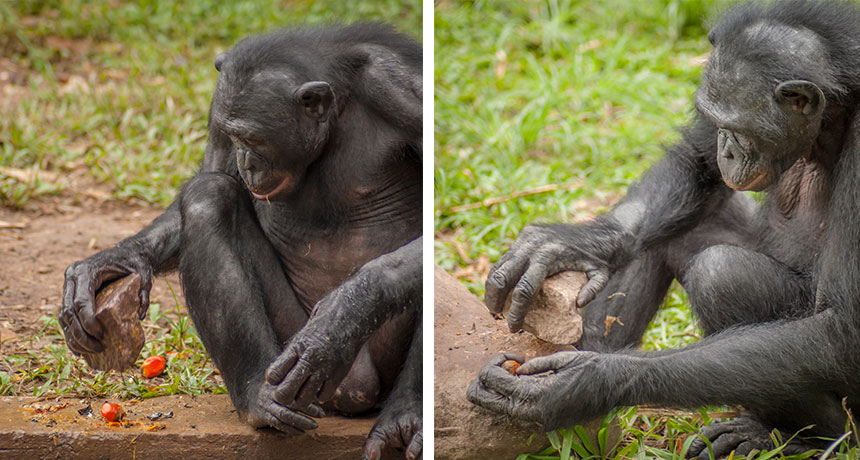

"Geographic variation within eastern chimpanzees ( Pan troglodytes cf. The hands of many higher primates can grasp and manipulate even very small objects. Today, most primates instead have flat fingernails and larger fingertip pads, which help them to hold on. The relative importance of these two grips in early stone tool. IUCN Red List of Threatened Species 2016: e.T15937A102329417. As the grasping hand evolved, claws disappeared. Part of the problem is that chimpanzee hands are not well adapted to such delicate work. Baltimore: Johns Hopkins University Press. Mammal Species of the World: A Taxonomic and Geographic Reference (3rd ed.). Like most chimpanzee populations, the eastern chimpanzees have amber to brown irises and dark sclerae. Both of its thumbs and its big toes are opposable, allowing a precision grip. The chimpanzee's body is covered with coarse black hair, except for the face, fingers, toes, palms of the hands and soles of the feet. Males can measure up to 145 centimetres (57 inches) and females up to 120 centimetres (47 inches) in height. Frame-by-frame analysis of hand contact strategies and statistical results indicated that (1) adults of both species used fewer contact strategies than juveniles and that there was a greater variability of contacts for small than for large objects (2) young juvenile chimpanzees and human children follow a similar grip types development, i.e. Physical descriptionĪdult chimpanzees in the wild weigh between 40 and 65 kilograms (88 and 143 pounds). Jane Goodall at Gombe Stream National Park. This subspecies has been extensively studied by Dr. If not properly managed, research and tourism also presents a risk of disease transmission between humans and chimpanzees. Because chimpanzees and humans are physiologically very similar, chimpanzees succumb to many diseases that afflict humans. Although the common chimpanzee is the most abundant and widespread of the non-human great apes, recent declines in East Africa are expected to continue due to hunting and loss of habitat. The 2007 IUCN Red List classified them as Endangered. schweinfurthii and the southern population as P. schweinfurthii, Colin Groves of the Australian National University argues that there is enough variation between the northern and southern populations of this population of chimpanzees to be split into two subspecies instead of one the northern population as P.


 0 kommentar(er)
0 kommentar(er)
